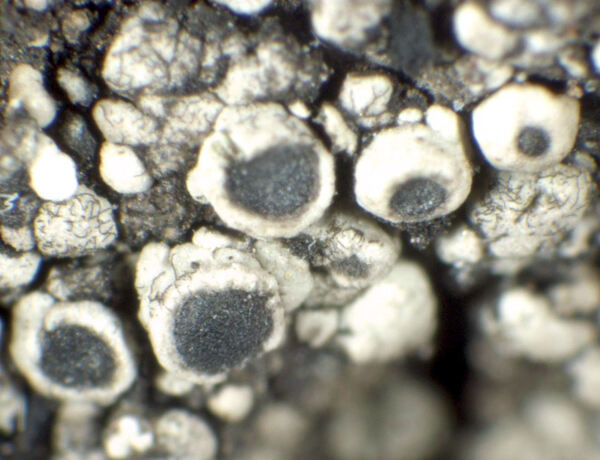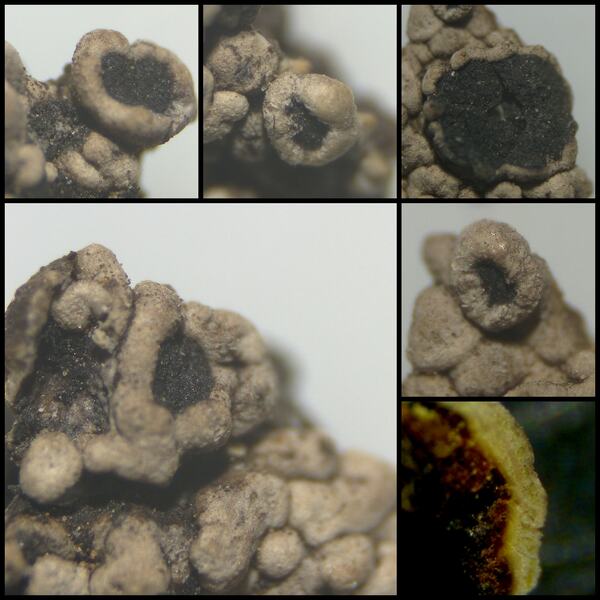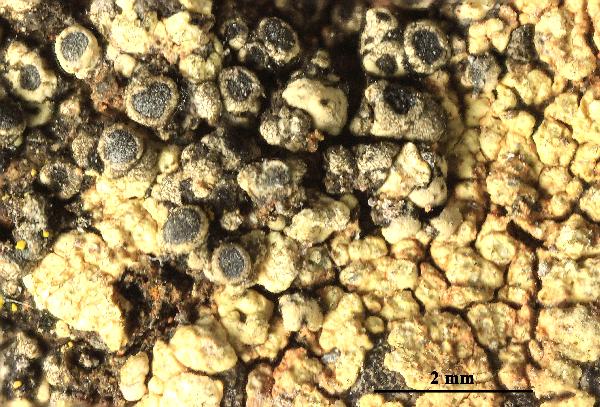Rinodina canariensis Matzer, H. Mayrhofer & P. Clerc
Nord. J. Bot., 14: 105, 1994.
Synonyms:
Distribution: C - Tosc (Matzer & al. 1994). S - Si (Matzer & al. 1994).
Description: Thallus crustose, episubstratic, up to c. 0.6 mm thick, continuous, rimose or areolate, the areoles usually inflated, smooth, pale to dark grey or ochraceous, often partly white-pruinose, sometimes with an evident dark hypothallus, often starting the life-cycle on other silicicolous crustose lichens, later usually autonomous. Medulla white in upper part, yellow to reddish brown and often K+ and C+ purple-red in lower part, I- throughout. Apothecia lecanorine, 0.6-1(-1.4) mm across, subimmersed to sessile, with a flat to convex, black, epruinose or whitish-pruinose disc and an entire, persistent thalline margin. Epithecium dark brown, rarely olivaceous or bluish green and in this case reacting N+ red, often covered with a coarsely granular epipsamma; hymenium colourless, 100-130(-150) μm high; paraphyses 1-2 μm thick at mid-level, the apical cells 4-5 μm wide, with a dark brown cap; hypothecium colourless, up to 200 μm high. Asci 8-spored, clavate, the K/I+ blue tholus penetrated by a faintly amyloid apical cushion with parallel or diverging flanks, the wall K/I-, surrounded by a K/I+ blue outer layer, Lecanora-type. Ascospores 1-septate, pigmented, fusiform, often curved, (15-)18-30(-32) x 9-14 μm, similar to the Pachysporaria-type, but tending towards the Physcia-type, with a finely scabrid wall and a well-developed torus, the ontogeny of type A (apical wall thickening after septum formation). Pycnidia black, immersed, rather rare. Conidia bacilliform, 3-8 x 1-1.5 μm. Photobiont chlorococcoid. Spot tests: cortex K+ yellow, C+ red, KC+ red, P+ faintly yellow; medulla K+, and C+ purple-red in lower part. Chemistry: atranorin and variable amounts of chloroatranorin, gyrophoric, lecanoric and orsellinic acids, rarely with zeorin; medulla with an unknown pigment.
Note: a Mediterranean-Macaronesian lichen found on base-rich volcanic rocks, such as andesite and basalt, more or less confined to coastal localities and to low coastal mountains, starting the life-cycle on several species of crustose lichens, especially Acarospora heufleriana, Lecanora praepostera, Ochrolechia parella, and Pertusaria pluripuncta.
Growth form: Crustose
Substrata: rocks
Photobiont: green algae other than Trentepohlia
Reproductive strategy: mainly sexual
paras crustose lichens
Commonnes-rarity: (info)
Alpine belt: absent
Subalpine belt: absent
Oromediterranean belt: absent
Montane belt: absent
Submediterranean belt: absent
Padanian area: absent
Humid submediterranean belt: absent
Humid mediterranean belt: very rare
Dry mediterranean belt: extremely rare
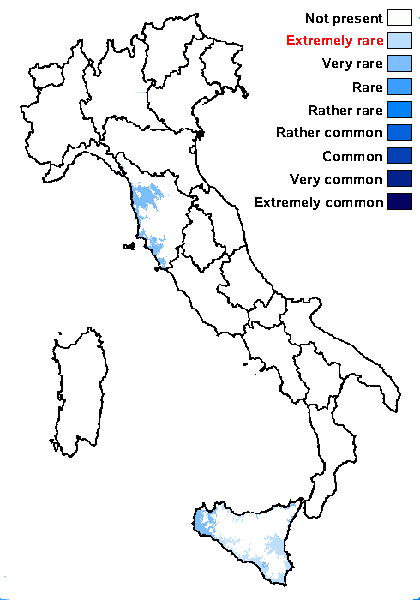
Predictive model
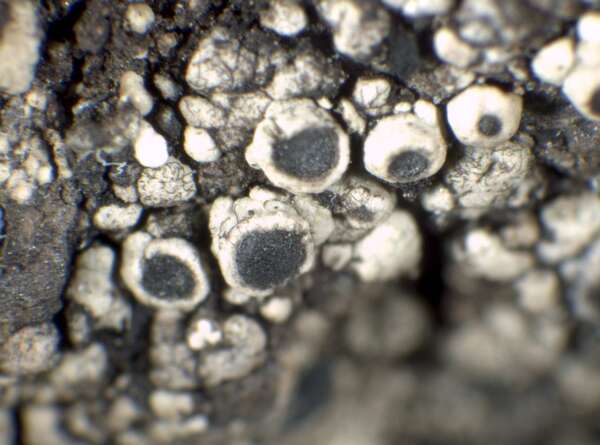

P.L. Nimis; Owner: Department of Life Sciences, University of Trieste
Herbarium: TSB (19296)
2002/05/13
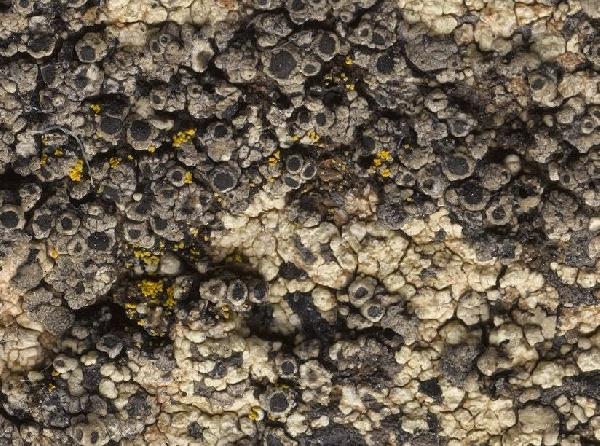
Modified from: https://gzu.jacq.org/GZU000286607
GZU000286607 - H. Mayrhofer & al. - Spain / Canarias — 28.83194° / -17.77361°
Label La Palma: etwa 1 km N der Punta Cumplida. ; Alt. 100 m
Habitat Kleinia-Euphorbia-Gesellschaft, auf Vulkanitblöcken
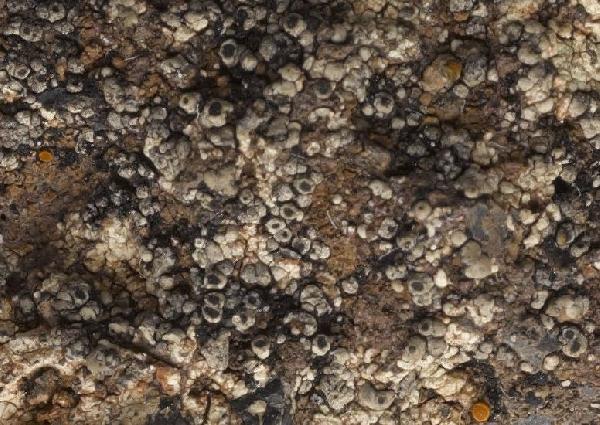
Modified from: https://gzu.jacq.org/GZU000286609
GZU000276491 - Mayrhofer,H. et al. 10660
Date 1991-11-30
Location Spain / Canarias
Label La Palma: etwa 1 km ad septentriones a Punta Cumplida ; Alt. 100 m
Habitat In thallo alieni lichenis parasitans, ad saxa eruptiva
Habitus
Annotations GZU Inv.-Nr. 64-94
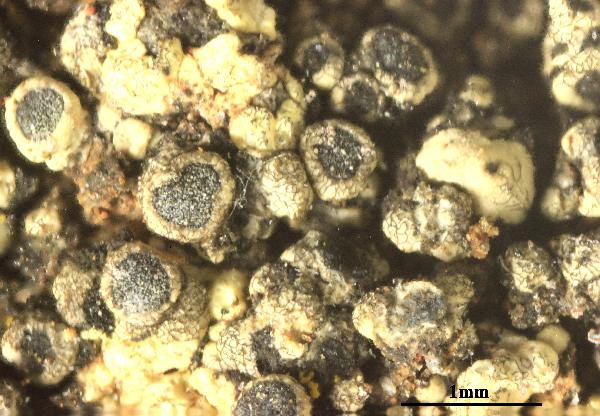

Felix Schumm - CC BY-SA 4.0
[VZR108], Insulae Canarienses, La Palma. 1 km ad septentriones a
Punta Cumplida, 100 m. In thallo alieni lichensis parasitans, ad saxa
eruptiva. Leg. H. Mayrhofer (no. 10660), M. Koch & M. Matzer,
30.11.1991. EX A. VEZDA: LICHENES RARIORES EXSICCATI NR. 108.
Growth form: Crustose
Substrata: rocks
Photobiont: green algae other than Trentepohlia
Reproductive strategy: mainly sexual
paras crustose lichens
Commonnes-rarity: (info)
Alpine belt: absent
Subalpine belt: absent
Oromediterranean belt: absent
Montane belt: absent
Submediterranean belt: absent
Padanian area: absent
Humid submediterranean belt: absent
Humid mediterranean belt: very rare
Dry mediterranean belt: extremely rare

Predictive model


P.L. Nimis; Owner: Department of Life Sciences, University of Trieste
Herbarium: TSB (19296)
2002/05/13

Modified from: https://gzu.jacq.org/GZU000286607
GZU000286607 - H. Mayrhofer & al. - Spain / Canarias — 28.83194° / -17.77361° Label La Palma: etwa 1 km N der Punta Cumplida. ; Alt. 100 m Habitat Kleinia-Euphorbia-Gesellschaft, auf Vulkanitblöcken

Modified from: https://gzu.jacq.org/GZU000286609
GZU000276491 - Mayrhofer,H. et al. 10660 Date 1991-11-30 Location Spain / Canarias Label La Palma: etwa 1 km ad septentriones a Punta Cumplida ; Alt. 100 m Habitat In thallo alieni lichenis parasitans, ad saxa eruptiva Habitus Annotations GZU Inv.-Nr. 64-94


 INDEX FUNGORUM
INDEX FUNGORUM
 GBIF
GBIF
